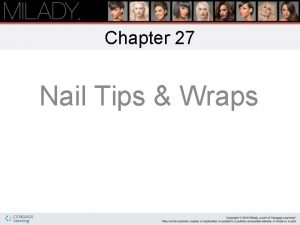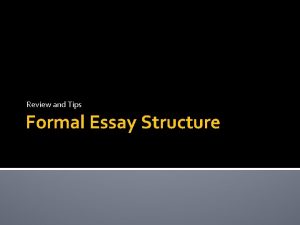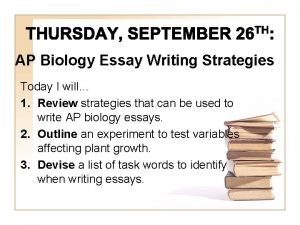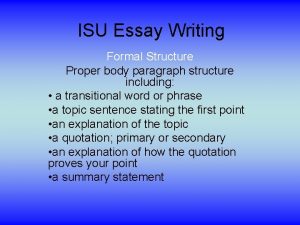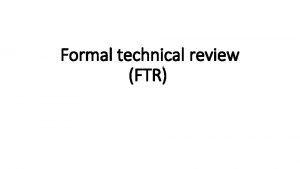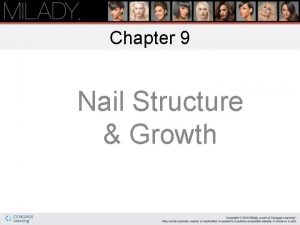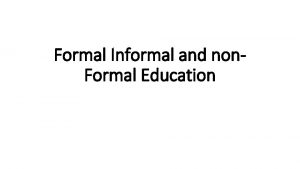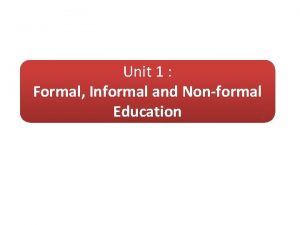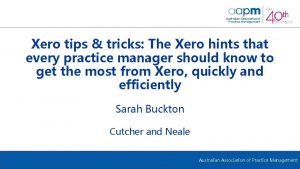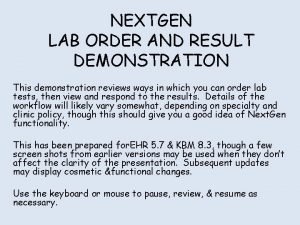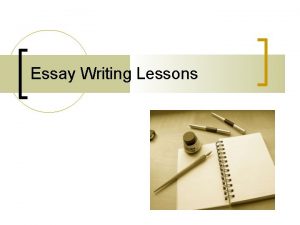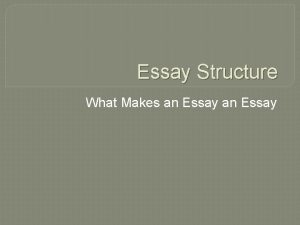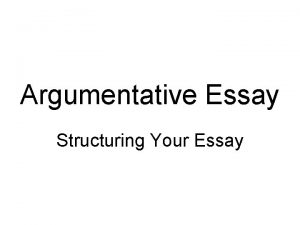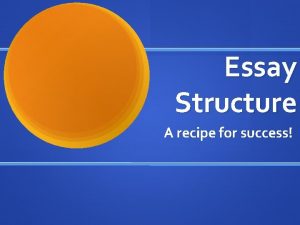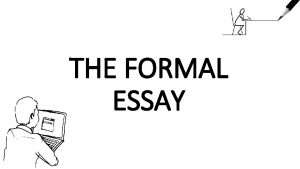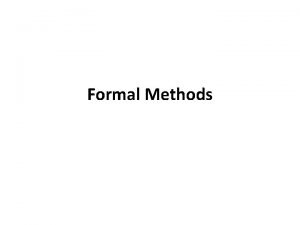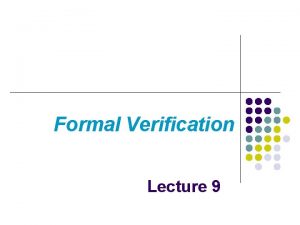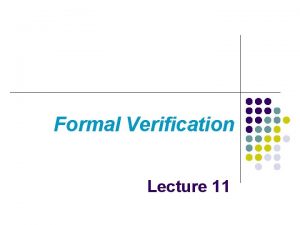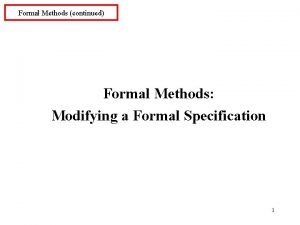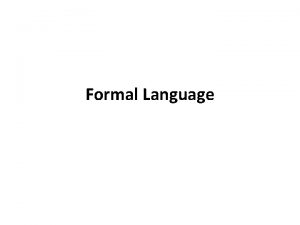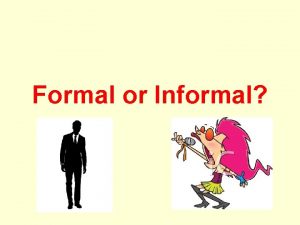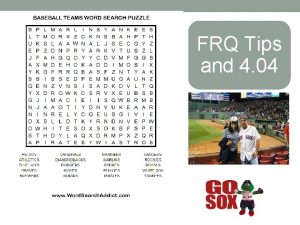Review and Tips Formal Essay Structure Formal Essay


















- Slides: 18

Review and Tips Formal Essay Structure

Formal Essay Structure �Introduction, Thesis �Body �Transition Words �Conclusion

Structure: Introduction �Introduction: Will capture the audiences attention: A hook such as a quote, controversial statement or rhetorical device may be used It will state the authors name and the title of the book It will provide relevant background information It will contain the main idea of the essay

Structure: Introduction/Hook 1. Start your essay with a question. "Have you ever been judged by your appearance? In The Outsiders, S. E. Hinton gives readers a glimpse inside the tough exterior of a social outcast. ” 2. Start with an interesting or little-known fact: "As a young child, Charles Dickens was forced to work in a shoe polish factory. In Hard Times, Dickens taps into his childhood experience to explore the evils of social injustice and hypocrisy. ”

Introduction/Hook 3. Start with the title and setting: "To Kill a Mockingbird, the award-winning book by Harper Lee, takes place in a small town in Alabama during a challenging period in American history. ” 4. Start with a meaningful quote: "'Are there no prisons? ' This offhand question was the response of Ebenezer Scrooge when confronted with the tragic state of hundreds of fellow citizens in Victorian London. ”

Introduction: Thesis �Level 4 Thesis This states the main idea that is being argued and outlines what the essay will be about The final sentence in the introduction Focus on: ▪ Parallel Structure ▪ Complex ideas

Parallel Structure: Level 4 Thesis �Parallel structure means using the same pattern of words to show that two or more ideas have the same level of importance. This can happen at the word, phrase, or clause level. The usual way to join parallel structures is with the use of coordinating conjunctions such as "and" or "or. ”

Parallel Structure: Level 4 Thesis �Not Parallel: The teacher said that he was a poor student because he waited until the last minute to study for the exam, completed his lab problems in a careless manner, and his motivation was low. �Parallel: The teacher said that he was a poor student because he waited until the last minute to study for the exam, completed his lab problems in a careless manner, and lacked motivation.

Complex Ideas: Level 4 Thesis � It should rouse the interest of readers in the topic being discussed. For such topics, the essays should provide necessary explanation of the topic in a concise manner. (SPECIFIC and CONCISE) � Uses contrasting symbols to show meaning (not very specific and broad ideas) VS. � The narrator’s internal moral conflicts through contrasting symbols to teach the audience that through reflecting, learning and experiencing new worlds a person will become more tolerant. (specific and complex ideas)

Thesis Level 4 Example �Teresa Pitman’s “The Cardboard Room” emphasizes the narrator’s internal moral conflicts through contrasting symbols to teach the audience that through reflecting, learning and experiencing new worlds a person will become tolerant; moreover the exolution of these symbols demonstrate that a child can grow beyond their parent’s narrow view.

Structure: Body �Body A good thesis statement suggests the way the body of an essay will be developed, thus the body paragraphs will support thesis statement. Each body paragraph will contain a topic and concluding sentence The body paragraphs elaborate and prove the main idea using Point, Proof and Explanation

Structure: Transitions Transition Words A good essay uses transitions (words and phrases) to link ideas, sentences and paragraphs, creates a better flow ▪ Further, First, Initially, Second, Last, In Addition, Also, etc. A good essay uses transitions at the end of a paragraph, as well as at the beginning of a new paragraph – throughout the whole essay

Body Example � One of the first ways the narrator expresses her parent’s ‘reason’ for hatred towards Eric and his family is based on their lack of understanding. Her parents don’t personally know Eric and his family but, they judge them without even knowing them anyway: “I thought about their house, thought about how my parents would laugh if I told them about it, how it would become a joke to share with Dad's friends from work when they came over” (1). The narrator escapes her parents’ walls by seeing, perhaps, a better understanding of Eric and his family’s lives. Further on in the story Eric doesn’t focus on the shallow ideals of social acceptance or temporary pleasure, he is interested in how himself and others perceive reality. Really, he is a genuine friend to the narrator, and this helped her to shed her parents’ barriers. The narrator’s perspective changes towards Eric and his family based on her personal understanding.

Structure: Conclusion �The Conclusion: Provides a brief summary of the main points of the essay Restates thesis in a new way Provides insightful final thoughts To conclude… In conclusion… Finally… In the end… (Optional, but make it clear that you are summarizing your ideas) IT DOES NOT INTRODUCE NEW IDEAS

Level 1 Thesis Statement �Teresa Pitman’s “The Cardboard Room” contains many symbols about tolerance. �Why is this a poor example?

Level 2 Thesis Statement �Teresa Pitman’s “The Cardboard Room” uses contrasting symbols to show the narrators internal struggle. �Why is this a poor example?

Level 3 Thesis Statement �Teresa Pitman’s “The Cardboard Room” emphasizes the narrator’s internal moral conflicts through contrasting symbols to teach the audience that through reflecting, learning and experiencing new worlds a person will become more tolerant. �How is this a Level 3 Thesis?

Level 4 Thesis Statement �Teresa Pitman’s “The Cardboard Room” emphasizes the narrator’s internal moral conflicts through contrasting symbols to teach the audience that through reflecting, learning and experiencing new worlds a person will become more tolerant; moreover the evolution of these symbols demonstrate that a child can grow beyond their parent’s narrow world view. �How is this a Level 4 Thesis?
 Milady chapter 27
Milady chapter 27 Formal essay
Formal essay Hl essay thesis example
Hl essay thesis example Biology essay writing tips
Biology essay writing tips Formal essay structure
Formal essay structure Cogati
Cogati Chapter review motion part a vocabulary review answer key
Chapter review motion part a vocabulary review answer key Ap gov review final exam review
Ap gov review final exam review Nader amin-salehi
Nader amin-salehi What is inclusion and exclusion
What is inclusion and exclusion Narrative review vs systematic review
Narrative review vs systematic review Chapter 9 review questions milady
Chapter 9 review questions milady Chapter 7 cell structure and function section review 7-2
Chapter 7 cell structure and function section review 7-2 It is intentional organized and structured form of learning
It is intentional organized and structured form of learning Whats formal education
Whats formal education Venn diagram formal education and nonformal education
Venn diagram formal education and nonformal education Xero tips and tricks
Xero tips and tricks Alteryx tips
Alteryx tips Nextgen orders
Nextgen orders
